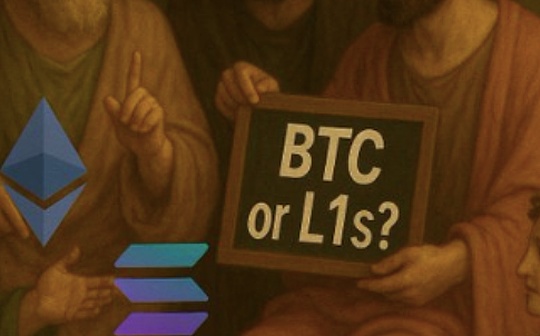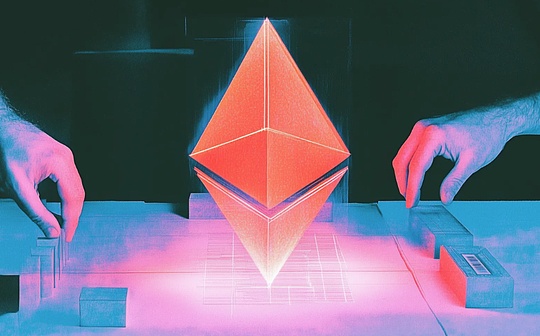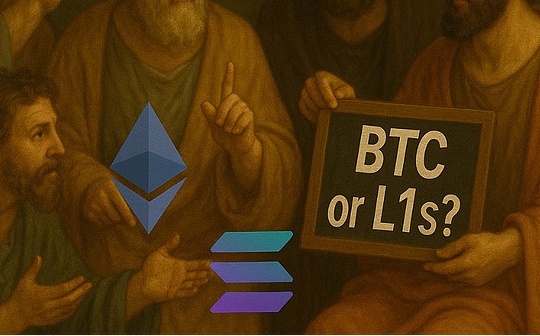
Author: Andrew Hayward Source: Decrypt Translation: Shan Ouba, Bitchain Vision Realm
TAIKO is an expansion network on the second floor of Ethereum. Compared with competitors, it has spent a lot of money on Blobs -but this is meaningful.
One of the second -level network called TAIKO Ethereum has dominated the so -called BLOBS (data storage dedicated to Ethereum extension) -but these efforts have made this little -known extension solution daily cost reaching the cost of daily costs reached the costTens of thousands of dollars, this week, even exceeded the $ 100,000 mark many times this week.
The TAIKO agreement was launched at the end of May to provide users with cheaper and faster transactions than the Ethereum main network, while drawing on the security of the network.Since its launch, TAIKO has spent an amazing $ 900,000 on Blobs in less than two weeks to guide users’ transactions to Ethereum network.
At the same time, TAIKO’s competitors, such as the Optimism network, do not exceed $ 1,000 on BLOB related costs almost every day.BLOBS was introduced as part of the Ethereum upgrade in March this year. It is known as the second -level extension network to publish new resources for Ethereum transactions at a lower cost.
Taiko Labs, the founder of the TAIKO agreement, announced in March that it had completed a $ 15 million Series A financing.Using the design of “zero knowledge” encryption technology, TAIKO is committed to standing out through its expansion design in areas including dozens of different expansion networks.
“TAIKO has just launched the main network, and there are many problems to solve it to achieve stability,” said the Taiko Lab CEO Daniel Wang in the written statement to Decrypt.”We know that we will use more BLOBS than the second layer. This is a design decision, not a mistake.”
The second layer of the network usually binds a batch of transactions together and handles it on a separate chain, and then publishes the receipt back to Ethereum.However, TAIKO’s design is different from this formula. Many transactions are packed in batches elsewhere.
Instead, the process of sorting transactions, that is, sequencing, is carried out on Ethereum itself.TAIKO Lab said in a blog post that this process is more decentralized than the second layer of the centralized sorter of the centralized sorter -centralized sorter is developed by the network development by the network developmentTeam control and charge a small part of user costs.
“This sounds expensive,” Alexei Zamyatin, co -founder of the Bitcoin 2nd network BOB, said in an interview with Decrypt.”This makes it safer, but it is not as safe as [Ethereum], and you are more expensive than most second -level networks.”
A weighing game
However, Wang said,If “Taiko is fully utilized by users”, the cost -related cost can easily reach the balance point of revenue and expenditure, thereby providing sustainable GAS fees.
Wang added that TAIKO fully understands the advantages and disadvantages of its sorting methods. He hopes that Ethereum researchers can study the data on TAIKO’s chain to explore improvement measures so that Ethereum can better support similar expansion networks.
Some Ethereum researchers, including Justin Drake, believe that the Taiko team is creating a new form of decentralized sorting, which can solve the key problems in the Ethereum ecosystem.”It has taken a major step in the combination of decentralization, trustworthiness, neutrality and Rollup,” he said in a written statement to Decrypt.
He pointed out that if more layers of networks are transferred to Ethereum itself, the fragmented problem that hinders the development of the entire space can be solved.At present, liquidity and assets are widely distributed between different layers of networks. In fact, it isolates users and applications in specific extension solutions, and both depend on Ethereum.
For the second layer of Ethereum, the introduction of BLOBS represents a major transformation of these protocols to interact with the underlying blockchain.Before BLOBS appeared as a separate expense market, the second floor could only publish packaging transactions in the form of Ethereum “CALLDATA”, which is a space containing transaction data.
Unlike conventional Ethereum activities in batches of user transactions in batches, BLOBS is almost like special lanes on highways, reducing congestion can reduce costs.However, the best way to pack these transactions before sending is yet to be discussed.
Blobs
In some cases, centralized sorters may be used to stagnate the network and destroy the unsuitable veil advertised by cryptocurrencies.Sometimes, centralized sorters may also be abused to delay transactions.However, TAIKO’s commitment to decentralization may not be the most effective, according to one of its community supporters.”Unfortunately, it is a bit expensive,” the encrypted researchers who have a pseudonym in Arixon.ETH said on Twitter (now known as X).”Because of sorting, we need to release a BLOB every 12 seconds. If there is not enough [transaction], then we will not fill these BLOBS.”TAIKO Labs’s Wang said that changing this frequency may be the potential solution that is about to be implemented, saying that the TAIKO community is “considering a slightly reduced block proposal frequency”.
Regardless of the full Blobs, the continuous BLOBS stream has made TAIKO one of its largest users.For example, according to a popular Dune dashboard, TAIKO released 25%of all Ethereum Blobs on Sunday.On that day, TAIKO spent nearly $ 63,000 in BLOB -related costs.
On Thursday, TAIKO’s cost on BLOBS reached US $ 123,000, accounting for 73%of all the relevant costs of all the network on the second layer, which was six digits the next day.Although most of the second -level networks are passed on to users by reducing costs, the high costs that TAIKO currently paid for decentralized is not a bill that users need to bear.”At present, this part of the cost is partially subsidized by the team,” Arixon.Eth said, and added that the process may be modified in the future. “It is not until the memory pool is sufficient [transaction] to push a block to [Ethereum Gongfang] Profit.
During the first time on Wednesday, the TAIKO token (online native cryptocurrency) on Wednesday, according to L2Beat data, the average network was processed by about 6.42 transactions per second.At the same time, Ethereum itself recorded about 13.6 transactions per second.
So far, the performance of TAIKO tokens has been fluctuating.After the launch, it plunged 40%from US $ 3.80 to US $ 2.27 within an hour. As of writing this article, the price of the token had reached to $ 2.45, showing that it had fallen by nearly 3%in the past day, according to Coingecto data.







